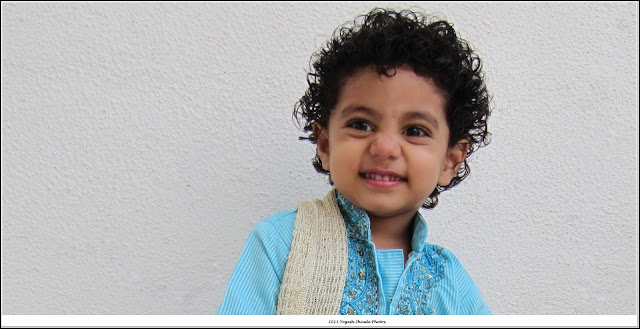Dragon Castel
History
Stephan Sarter was the youngest son of an in keeper Bonner 1833rd After an apprenticeship and numerous trips abroad, he came as a punter to great wealth, including the financing of the Suez Canal. 1881 George, Duke of Saxe-Meiningen Sarter raised to the peerage. In 1882 Baron Stephan von Sarter laid the foundation stone of a representative resident Castle Dragon Castle, a mix of villa, castle.
The Düsseldorf architects Leo von Abbema and Bernhard Tüshaus made the first plans submitted to the Paris-based architect William Hoffman, a student of the Cologne cathedral architect Ernst Friedrich Zwirner, revised. The historicist architecture and beautiful interior of the palace were already among contemporaries many admirers. Sarter lived in his castle never. His adopted home was Paris, where the bachelor, died in 1902 without having settled his estate.
Jakob Biesenbach, a nephew Sarter, bought the castle in their territory
1923 - Social responsibility of a manufacturer.
Flohr Hermann, who had lived for several years as a tenant, the castle auctioned in 1921 and 1923 the castle courtyard Castle Dragon Castle. The Cologne merchant and manufacturer provided several block houses the Women's Association of the German Red Cross as a convalescent home for disposal. The socially engaged Flohr regulated still alive and his estate decided to leave the property over to a Catholic order. 1930, he auctioned the interior, in relation to the Christian School Brothers Castle.
1942 - Destruction of World War II
A Nazi elite school, the Adolf Hitler School (AHS 3) related, 1942 Castle Dragon Castle. The most sustainable structural changes of this period is the destruction of the original main entrance. Instead of the elegant double-barreled staircase that led to a gabled portico, the entrance by a broad stairway was monumentalized. The park learned from landfills for the erection of guns great changes.
Finally, the castle came under attack. Almost all the stained glass was made at the break, and the art facility was badly damaged. Wind and rain were freely at the side of the Rhine river, allowing moisture to get into the masonry.
At the end of the war, American troops occupied the castle, later it was used as refugee housing. While the interior has been badly affected: the carved wood paneling were used as firewood, large portions of the mural in the stairwell, Nibelung and dining room were stolen entirely or in part.
1971 - fall and a new beginning, the era of spinach
The next 10 years, from 1960-1970, was empty castle and dragon castle fell into disrepair. A planned demolition in 1963 could be prevented, but only in 1971 acquired the property a private citizen. Paul spinach was the ensemble again repaired and re-equip.
Young artists, provided a free reconstruction of the missing paintings. 1973 Spinach Castle Dragon Castle to the general public made available.Resided until his death in 1989, the eccentric Lord of the Manor, to entwine the numerous stories on Dragon Castle or in the courtyard.
1986 - Heritage Restoration
1986 Castle Dragon Castle was declared a historical monument. The much-needed steps towards a comprehensive restoration initiated in 1989, the North Rhine-Westphalia Foundation conservation, heritage and culture care. Since 1995, the NRW-Stiftung be in close cooperation with the City of Winter King, the ensemble Castle Dragon Castle carefully restored.
Since April 2003, informed the Special Exhibition "opened for renovation - Insights into the construction site of Castle Dragon Castle" in detail about the restoration work. Since spring 2010, the rehabilitation work in the castle and all restored and finished remöblierten rooms available again for the visitors.
Kneip Room
The pub room or parlor served as a social drinking saloon - more precisely than the parlor. Here the male society gathered for the official events in an intimate atmosphere to confidential conversations and trinkseligem together.
The painter Hermann Schneider (1847-1918), a disciple of the historical painter Carl Theodor von Piloty from London, created in the Kneip Room, the large format and also lively paintings. The wall forms the north form the "Childhood of Bacchus" from, to the east and west, "the love of Bacchus to Ariadne auf Naxos" and in the south the "Triumph of Bacchus".
Opening times
Every day from Tuesday to Sunday 11:00 bis 18:00 clock.
In the school holidays in North Rhine-Westphalia also open on Monday.
Public Tours
Public tours are held hourly.
The first tour starts at 12.00 clock, the last at 17.00 clock.
In the school holidays in North Rhine-Westphalia also open on Monday.
Public Tours
Public tours are held hourly.
The first tour starts at 12.00 clock, the last at 17.00 clock.
How to get to Königswinter
Way to the castle
Walk
From the valley station of the Drachenfels Railway runs the so-called Donkey Trail, past the Nibelungen Hall and the front building, up to the castle gate. For a leisurely ascent will take about 30 minutes.
With the Drachenfelsbahn
You have the option to drive to the historic cogwheel train to the Castle Gate (Central Station).
With the light rail
Line 66 (Siegburg / Bonn-Bad Honnef)
Stops Königswinter / Clemens-August-Straße
Königswinter / Ferry
North Side view of Castel.
View from Behinde of Castel
Interiors of Dragon Castel..
View from Front side of Dragon Castel (North Tower)
To view some more snaps for the Day you can click on below Url
For better view of snaps Please download Adobe Flash player on your system
its free http://get.adobe.com/flashplayer
its free http://get.adobe.com/
*Note:
Information collected from available sources, with intension to just have an idea …
Information collected from available sources, with intension to just have an idea …
subject to change without prior information…

































